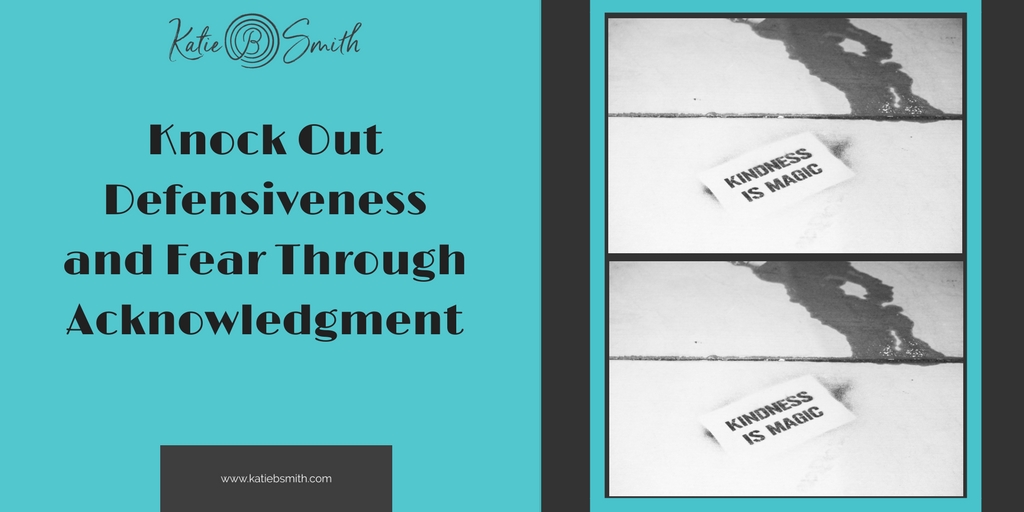Knock Out Defensiveness and Fear Through Acknowledgment
Guy Hendricks has a great quote; he says arguing is vying to be in the victim position. Anytime you experience defensiveness in a conversation, the person being defensive is scared. You can choose to join the party and exhibit the same behavior, or you can take the higher ground and choose not to be a victim.
It is important to acknowledge the other person’s feelings and create a conversation of respect, safety and honesty in a tone of voice that is not condescending, mean or hurtful. Making the choice to hold a more powerful presence focused on working together and acknowledging what is present (both the good and the uncomfortable) creates safety for both parties and develops trust.
Once this is created, then you can move toward a solution and collaboration. Acknowledging another’s feelings and thoughts tells them you are listening and present in the conversation. People feel valued when this happens, which creates engagement and the desire to work together or agree to disagree. Either way, it diffuses defensiveness and fear, which breed more of the same.
It is hard to create a habit of acknowledgment in others if we are not acknowledging ourselves first. It all starts within us. Once we create the habit of acknowledging our own thoughts, decisions and feelings, we automatically create a habit of acknowledging others. This is the first step in raising your emotional intelligence, by identifying your feelings and that of another. Even when we acknowledge what is not working, we take the fear out of the conversation and give all parties permission to communicate how they feel in that moment. This opens up trust, vulnerability and a safe dialogue.
You might be surprised at how good it feels to name the feeling you are experiencing in the moment. It creates trust among all involved in the conversation because it is real and honest. Starting a conversation by acknowledging what is happening in the moment is a great way to drop defensiveness, and then move the conversation to where the disagreement is. By communicating whatever your feeling normalizes it and moves the parties to get to the core of the conversation much quicker. When you make the uncomfortable in a conversation negative, it does not create greater ease and effortlessness; it creates more stress and less safety, which puts everyone on the defensive. By acknowledging what is present, you then have the possibility of working together towards a solution, building a stronger relationship and making room to grow empathy by being vulnerable. This is what makes us all feel more accepted and acknowledged becomes it gives us permission to be authentic.
Be Kind,
Katie
